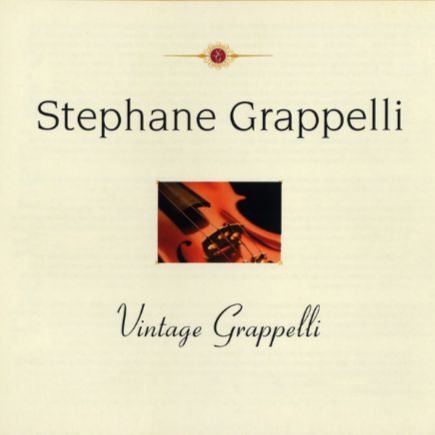Do You Know What It Means to Miss New Orleans?: un hymne à la ville berceau du jazz
Composée par Louis Alter sur un texte d’Eddie DeLange, Do You Know What It Means to Miss New Orleans? est enregistrée par Louis Armstrong en 1946 chez RCA Victor, avant d’être reprise l’année suivante dans la bande sonore du film New Orleans d’Arthur Lubin. Ce mélodrame musical met en scène un couple incarné par Billie Holiday et Louis Armstrong lui-même, également présent à la trompette.
Devenue un standard incontournable, la chanson exprime avec force la nostalgie et l’attachement viscéral à La Nouvelle-Orléans. Sa mélodie poignante, portée par des paroles sensibles, fait revivre l’âme singulière de cette ville mythique, entre beauté mélancolique et chaleur humaine.
Berceau du jazz, La Nouvelle-Orléans a vu naître un langage musical nouveau, nourri d’un foisonnement d’influences: brass bands, blues, ragtime et chants spirituels se sont entremêlés pour forger l’identité sonore d’un genre en pleine éclosion.
Dans ce contexte, Do You Know What It Means to Miss New Orleans? s’est imposée comme une véritable signature émotionnelle de la ville, souvent interprétée lors de festivals, dans les clubs, ou au cours de cérémonies commémoratives.
Stéphane Grappelli: une élégance tardive au parfum de nostalgie
Enregistrée à San Francisco en juillet 1981 pour l’album Vintage 1981, la version de Do You Know What It Means to Miss New Orleans? par Stéphane Grappelli (73 ans à l’époque) illustre l’art raffiné et intemporel du violoniste dans la dernière partie de sa carrière. Avec cet album, Grappelli démontre qu’il reste, même dans la maturité, un maître capable de transformer un standard en tableau sonore d’une finesse rare.
Ce standard est indissociablement lié à la nostalgie et au souvenir. Grappelli en fait une lecture d’une exquise délicatesse, portée par un violon lumineux et chantant qui épouse la ligne mélodique avec une grâce naturelle. Loin de toute virtuosité ostentatoire, il privilégie la fluidité, laissant chaque note résonner et invitant à une écoute attentive, presque contemplative.
L’accompagnement feutré, typique de ses formations de l’époque, soutient cette approche élégante et dépouillée. Les accords subtils et les rythmes doux installent un climat d’intimité propice à la rêverie, où le violon devient véritablement la voix du morceau. Ce choix esthétique traduit l’évolution de Grappelli vers un jazz où la mélodie prime, tout en conservant l’héritage swing et la liberté de l’improvisation.
Do You Know What It Means to Miss New Orleans?: un himno a la ciudad cuna del jazz
Compuesta por Louis Alter con letra de Eddie DeLange, Do You Know What It Means to Miss New Orleans? fue grabada por Louis Armstrong en 1946 para RCA Victor, y retomada al año siguiente en la banda sonora de la película New Orleans, dirigida por Arthur Lubin. Este melodrama musical presenta a una pareja interpretada por Billie Holiday y el propio Armstrong, también presente con su trompeta.
Convertida en un estándar imprescindible, la canción expresa con fuerza la nostalgia y el profundo apego por Nueva Orleans. Su melodía conmovedora y su letra sensible evocan el alma única de esta ciudad mítica, entre melancolía y calidez humana.
Cuna del jazz, Nueva Orleans fue el escenario del nacimiento de un lenguaje musical nuevo, nutrido por un crisol de influencias: brass bands, blues, ragtime y cantos espirituales se entrelazaron para dar forma a la identidad sonora de un género emergente.
En este contexto, Do You Know What It Means to Miss New Orleans? se impuso como una verdadera firma emocional de la ciudad, interpretada con frecuencia en festivales, clubes y actos conmemorativos.
Stéphane Grappelli: una elegancia tardía con aroma de nostalgia
Grabada en San Francisco en julio de 1981 para el álbum Vintage 1981, la versión de Do You Know What It Means to Miss New Orleans? interpretada por Stéphane Grappelli (con 73 años en ese momento) refleja el arte refinado e intemporal del violinista en la etapa final de su carrera. Con este álbum, Grappelli demuestra que, incluso en su madurez, sigue siendo un maestro capaz de transformar un estándar en un cuadro sonoro de una delicadeza extraordinaria.
Este estándar está indisolublemente ligado a la nostalgia y al recuerdo. Grappelli lo aborda con una exquisita sutileza, ofreciendo un violín luminoso y cantabile que sigue la línea melódica con gracia natural. Lejos de toda virtuosidad ostentosa, privilegia la fluidez, dejando que cada nota resuene e invite a una escucha atenta, casi contemplativa.
El acompañamiento tenue, característico de sus formaciones de la época, refuerza esta aproximación elegante y depurada. Los acordes sutiles y los ritmos suaves generan un clima íntimo propicio para la ensoñación, donde el violín se convierte verdaderamente en la voz principal de la pieza. Esta elección estética refleja la evolución de Grappelli hacia un jazz donde la melodía ocupa un lugar central, manteniendo al mismo tiempo el legado del swing y la libertad de la improvisación.
Do You Know What It Means to Miss New Orleans?: un inno alla città culla del jazz
Composta da Louis Alter su testo di Eddie DeLange, Do You Know What It Means to Miss New Orleans? fu registrata da Louis Armstrong nel 1946 per la RCA Victor, e ripresa l’anno seguente nella colonna sonora del film New Orleans di Arthur Lubin. Questo melodramma musicale racconta una storia d’amore interpretata da Billie Holiday e dallo stesso Armstrong, presente anche alla tromba.
Divenuto un classico intramontabile, il brano esprime con intensità la nostalgia e il legame profondo con New Orleans. La melodia struggente e il testo toccante evocano l’anima inconfondibile di questa città leggendaria, sospesa tra bellezza malinconica e calore umano.
New Orleans, culla del jazz, ha visto nascere un linguaggio musicale nuovo, alimentato da un ricco intreccio di influenze: brass band, blues, ragtime e canti spirituali hanno contribuito a definire l’identità sonora di un genere in piena espansione.
In questo contesto, Do You Know What It Means to Miss New Orleans? si è affermata come una vera firma emotiva della città, spesso eseguita nei festival, nei club jazz e durante commemorazioni pubbliche.
Stéphane Grappelli: un’eleganza tardiva dal profumo di nostalgia
Registrata a San Francisco nel luglio 1981 per l’album Vintage 1981, la versione di Do You Know What It Means to Miss New Orleans? eseguita da Stéphane Grappelli (all’epoca settantatreenne) esprime l’arte raffinata e senza tempo del violinista nella fase finale della sua carriera. Con questo album, Grappelli dimostra che, anche nella maturità, resta un maestro capace di trasformare uno standard in un quadro sonoro di rara finezza.
Questo standard è indissolubilmente legato alla nostalgia e al ricordo. Grappelli ne offre una lettura di squisita delicatezza, con un violino luminoso e cantabile che segue la linea melodica con naturale eleganza. Lontano da ogni virtuosismo ostentato, privilegia la fluidità, lasciando che ogni nota risuoni e inviti a un ascolto attento, quasi contemplativo.
L’accompagnamento ovattato, tipico delle sue formazioni dell’epoca, sostiene questa impostazione elegante ed essenziale. Gli accordi sottili e i ritmi morbidi creano un clima intimo e sognante, dove il violino diventa realmente la voce del brano. Questa scelta estetica riflette l’evoluzione di Grappelli verso un jazz in cui la melodia è protagonista, senza rinunciare all’eredità dello swing e alla libertà dell’improvvisazione.
Do You Know What It Means to Miss New Orleans?: an anthem to the birthplace of jazz
Composed by Louis Alter with lyrics by Eddie DeLange, Do You Know What It Means to Miss New Orleans? was recorded by Louis Armstrong in 1946 for RCA Victor and featured the following year in the soundtrack of Arthur Lubin’s film New Orleans. This musical melodrama tells a love story portrayed by Billie Holiday and Louis Armstrong himself, who also plays the trumpet.
Now a timeless standard, the song powerfully conveys the longing and deep emotional bond with New Orleans. Its poignant melody and heartfelt lyrics bring to life the soul of this legendary city—one marked by its melancholic beauty and human warmth.
As the birthplace of jazz, New Orleans gave rise to a new musical language, shaped by a rich fusion of influences: brass bands, blues, ragtime, and spirituals all contributed to the emergence of the jazz sound.
In this context, Do You Know What It Means to Miss New Orleans? has become an emotional signature of the city, frequently performed at festivals, in jazz clubs, and during commemorative events.
Stéphane Grappelli: a late elegance with a touch of nostalgia
Recorded in San Francisco in July 1981 for the album Vintage 1981, Stéphane Grappelli’s version of Do You Know What It Means to Miss New Orleans? (at age 73) showcases the refined and timeless artistry of the violinist in the later stage of his career. With this album, Grappelli proves that even in his maturity, he remained a master capable of transforming a standard into a sonic tableau of remarkable delicacy.
This standard is inseparably linked to nostalgia and memory. Grappelli’s interpretation is exquisitely delicate, with a luminous, singing violin that follows the melodic line with natural grace. Far from any ostentatious virtuosity, he favors fluidity, allowing each note to resonate and inviting a focused, almost contemplative listening experience.
The subdued accompaniment, characteristic of his ensembles from that period, reinforces this elegant and stripped-down approach. Subtle chords and gentle rhythms create an intimate atmosphere conducive to reverie, where the violin truly becomes the voice of the piece. This aesthetic choice reflects Grappelli’s evolution toward a jazz where melody takes precedence, while still embracing the legacy of swing and the freedom of improvisation.
Autres articles – Otros artículos – Altri articoli
Do You Know What It Means To Miss New Orleans?–17.10.1946–Louis ARMSTRONG
Do You Know What It Means To Miss New Orleans?–18.04.1947–Billie HOLIDAY
Do You Know What It Means To Miss New Orleans?–01.06.1956–Louis ARMSTRONG
Do You Know What It Means To Miss New Orleans?–13.11.1959–Kid ORY & Red ALLEN
Do You Know What It Means To Miss New Orleans?–19-20.12.1986–Wynton MARSALIS
Do You Know What It Means To Miss New Orleans?–01.11.1988–Harry CONNICK Jr.
Do You Know What It Means To Miss New Orleans?–xx.xx.1991–Pete FOUNTAIN
Do You Know What It Means To Miss New Orleans?–25.08.2005–Stefano BOLLANI
Do You Know What It Means To Miss New Orleans?–30.09.2008–TAKE 6 & Aaron NEVILLE
Do You Know What It Means To Miss New Orleans?–20.10-21.10.2008–Jerry GRANELLI


